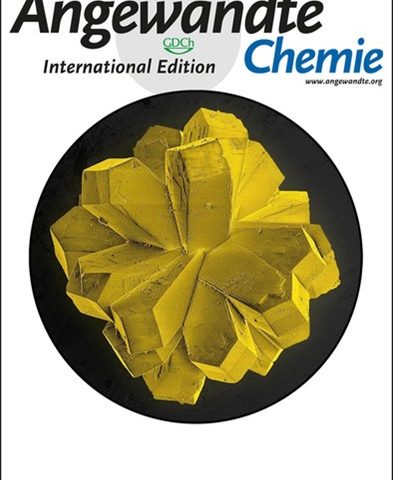Zeolites are the active ingredients of many industrial catalysts. The have very small pores, that are just large enough to let specific molecules access their active sites. However, these narrow pores slow down the molecules on their way to the active sites, so researchers are trying to develop zeolites with hierarchical pore systems, that allow more easy access. A group of researchers from ICC in cooperation with workers from the Cell Biology group at Utrecht University, the DESY synchrotron, and workers from the University of Leuven (Belgium) has now visualized the formation of the hierarchical pore system during the gradual removal of silica from large crystals of the zeolite ZSM-5 using in situ fluorescence microscopy and small angle x-ray scattering. First author Matthias Filez worked in the ICC group under a Marie Sklodowska‐Curie grant. The cover-image shows an intergrown group of ZSM-5 crystals that are reminiscent of the Utrecht University “Sol Iustitiae” logo.
The paper: Chemical Imaging of Hierarchical Porosity Formation within a Zeolite Crystal Visualized by Small‐Angle X‐Ray Scattering and In‐Situ Fluorescence Microscopy, by Matthias Filez*, Martin Vesely*, Ivan Garcia‐Torregrosa*, Marianna Gambino*, Özgün Attila*, Florian Meirer*, Eugene A. Katrukha, Maarten Roeffaers, Jan Garrevoet, Lukas Kapitein, and Bert Weckhuysen*, Angewandte Chemie International Edition, volume 60, issue 25, pages 13803-13806, https://onlinelibrary.wiley.com/doi/10.1002/anie.202101747 (* indicates ICC authors)

